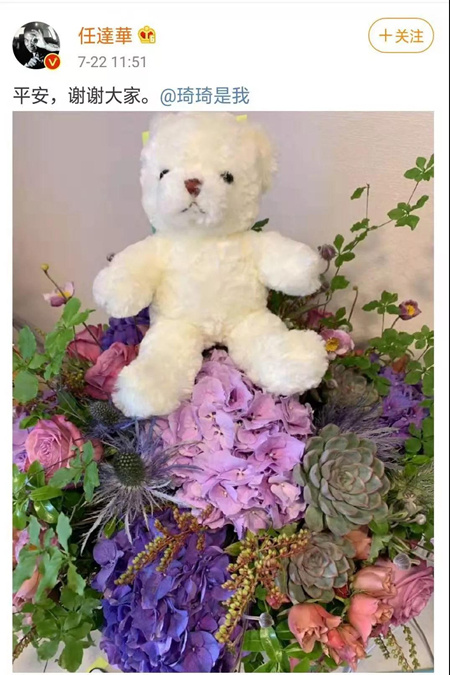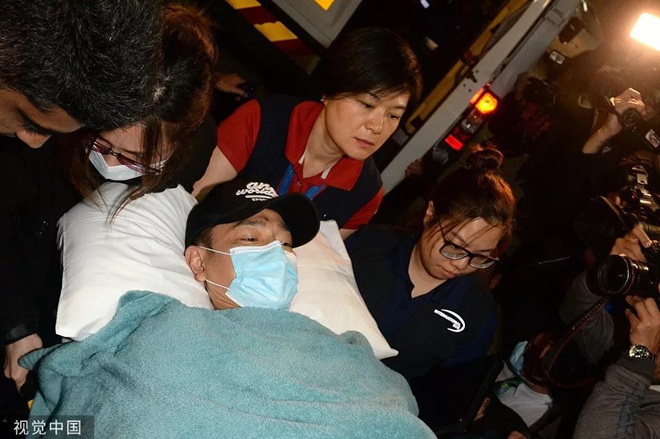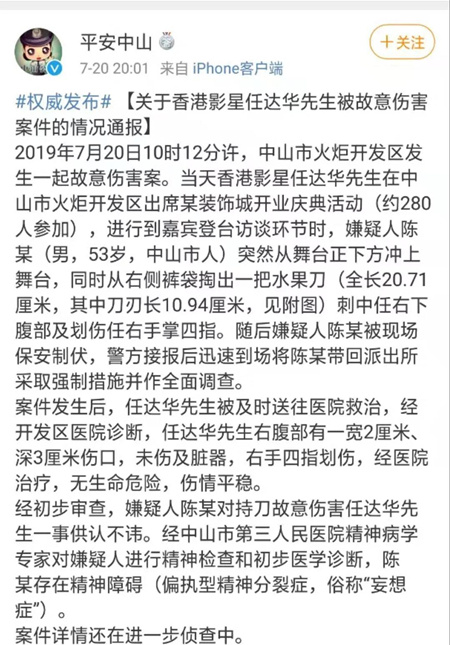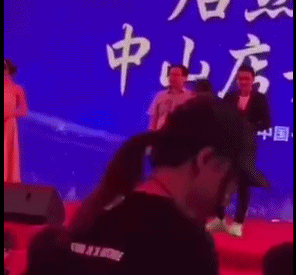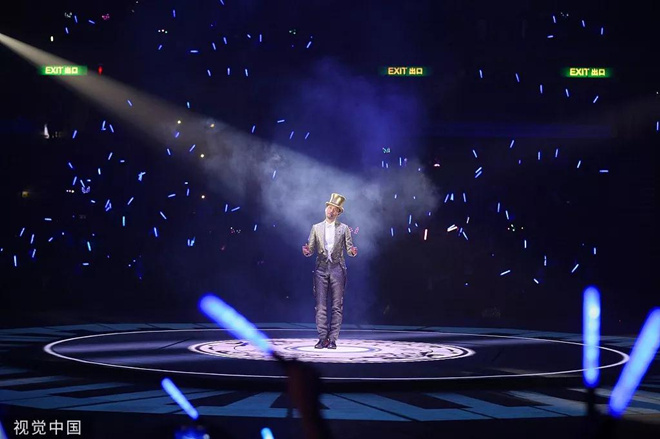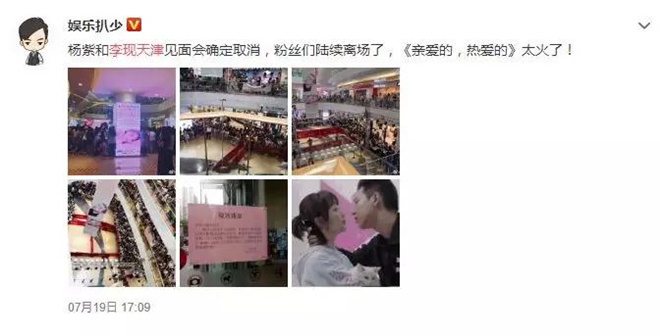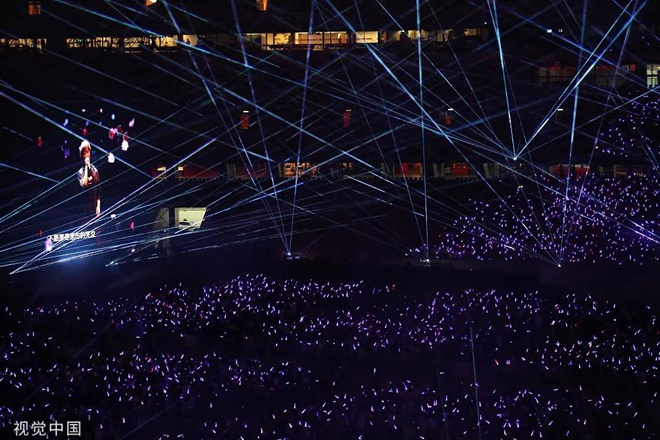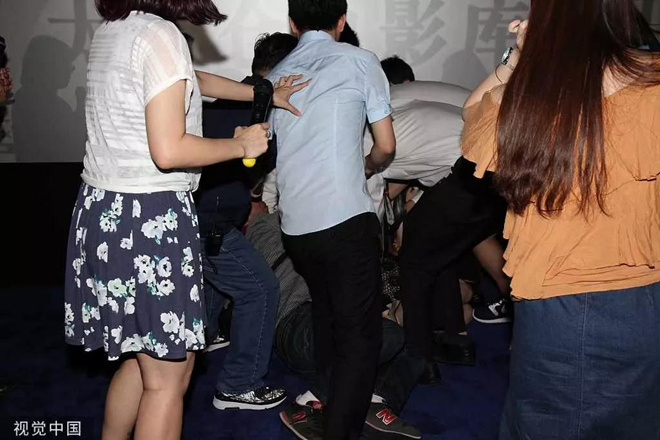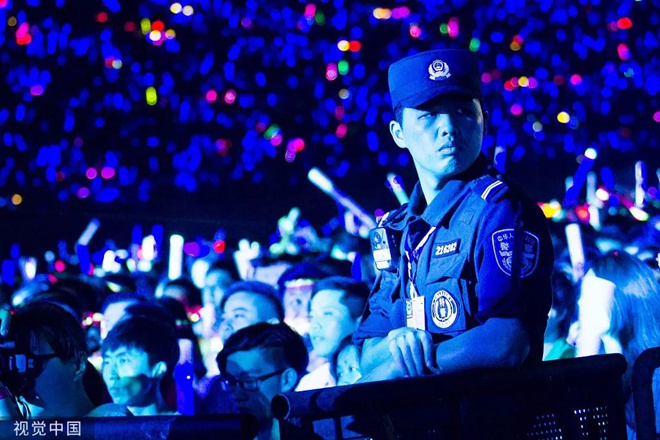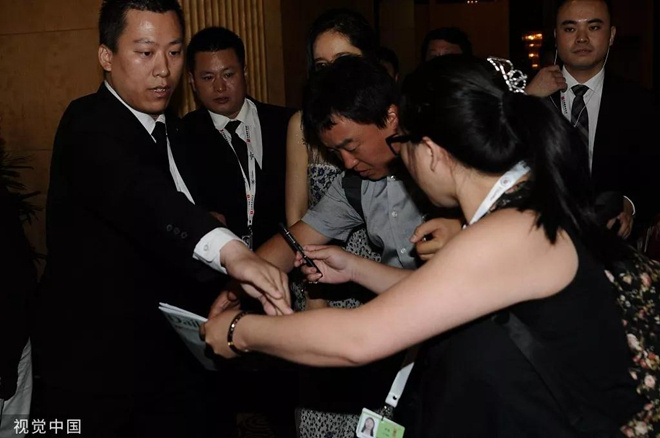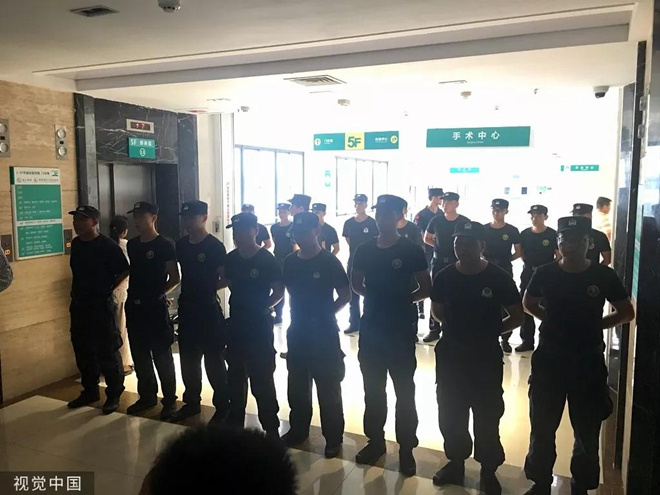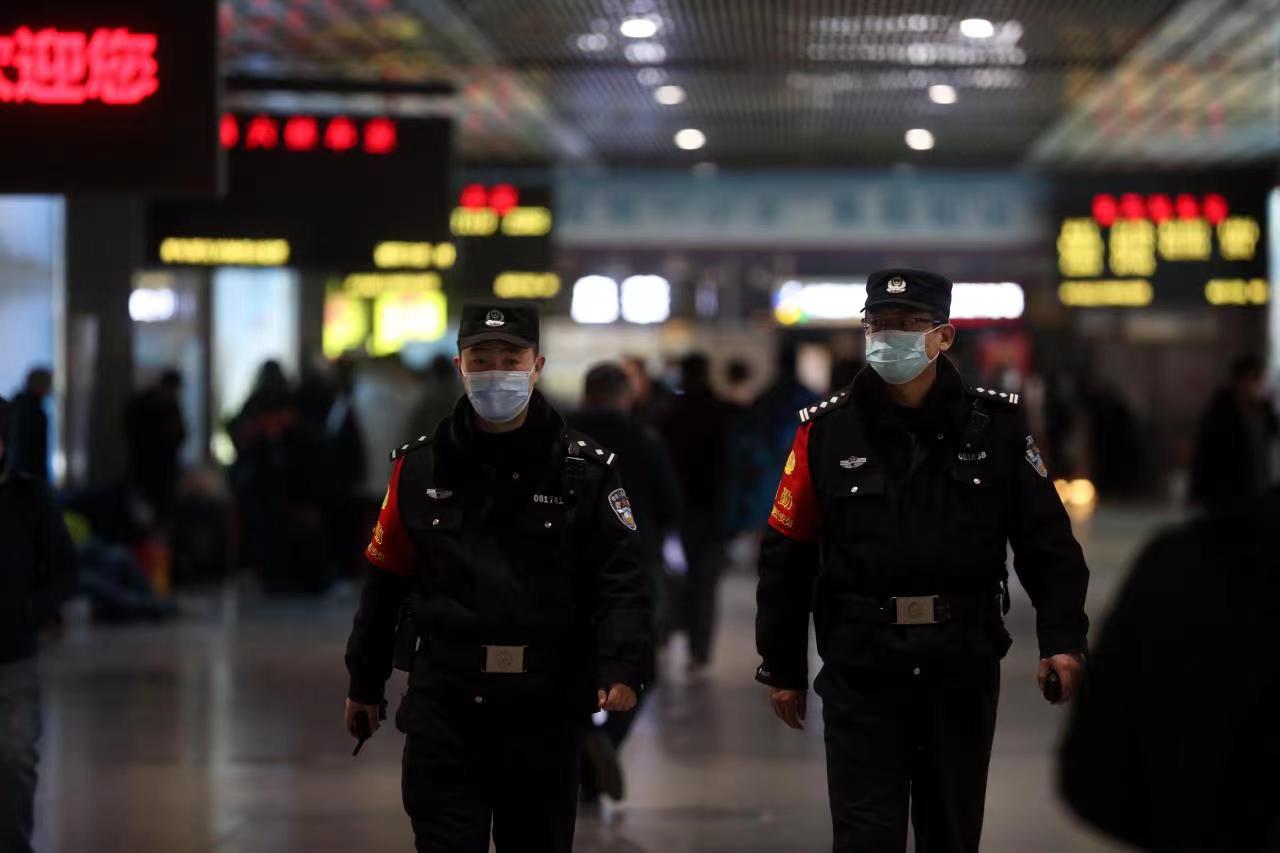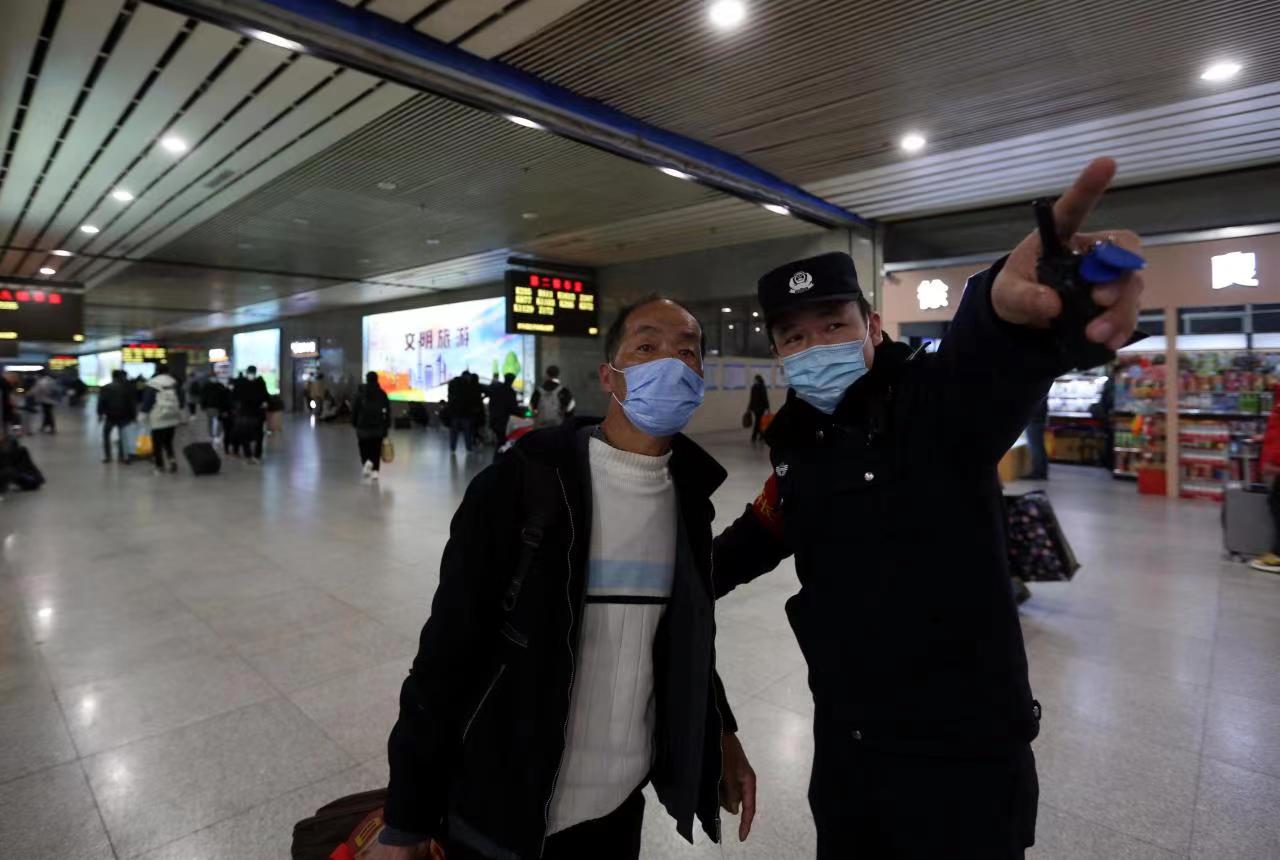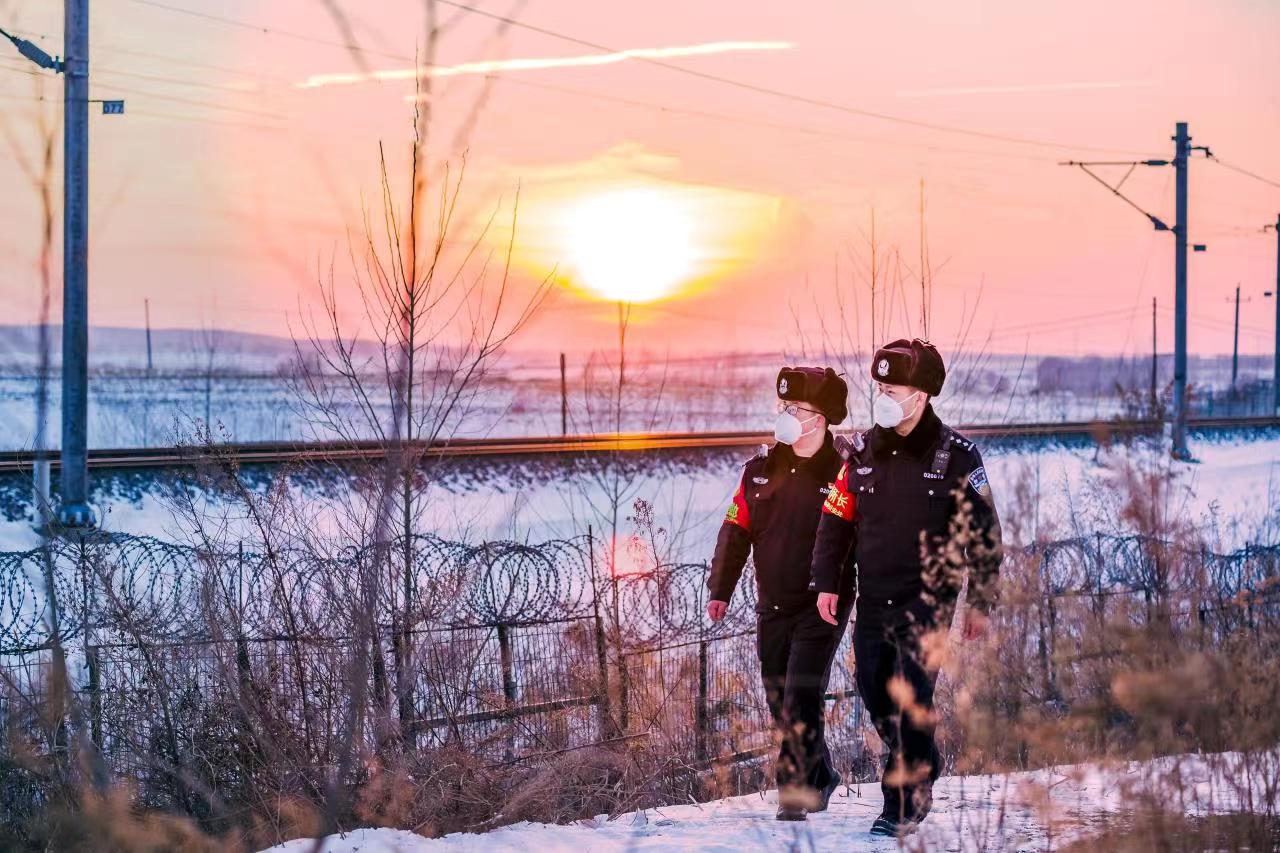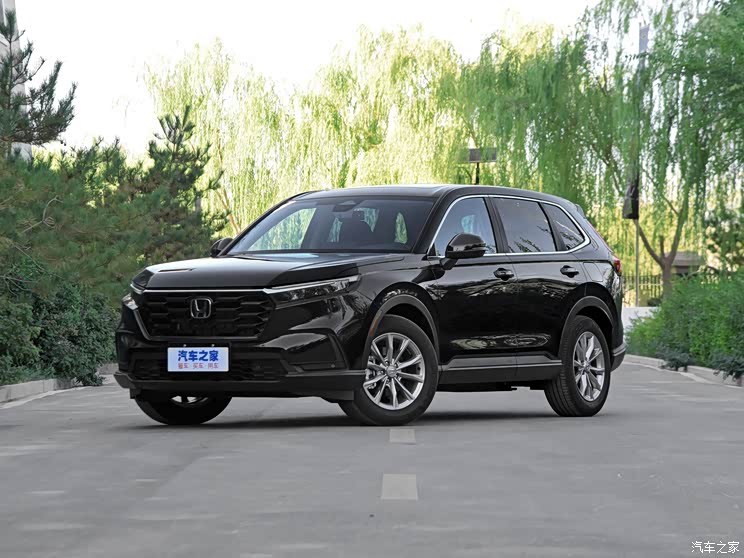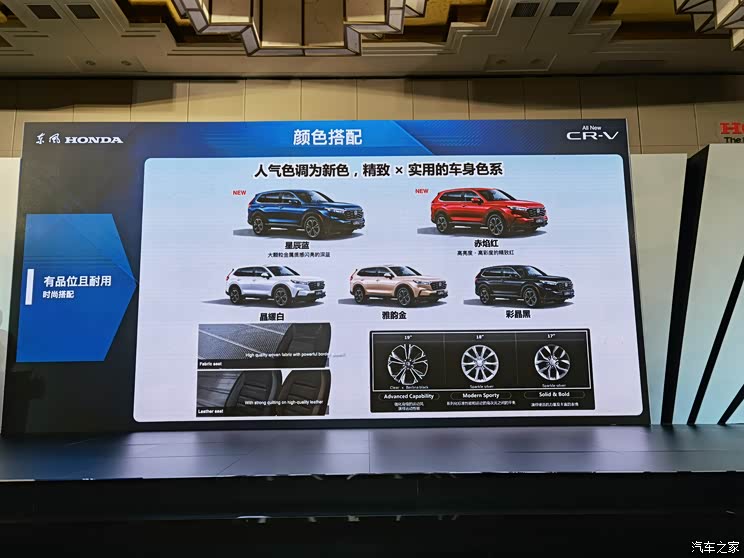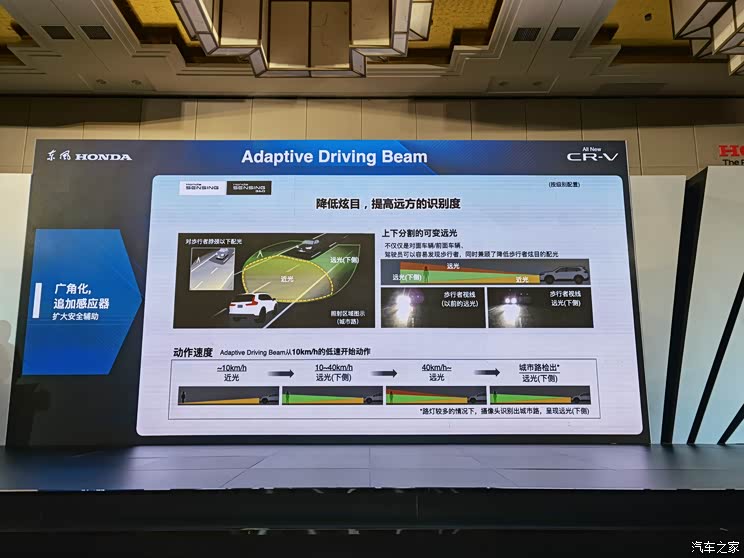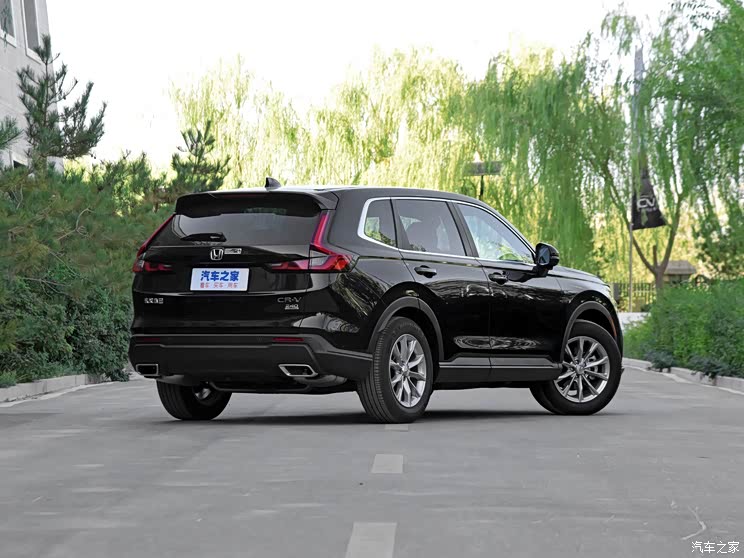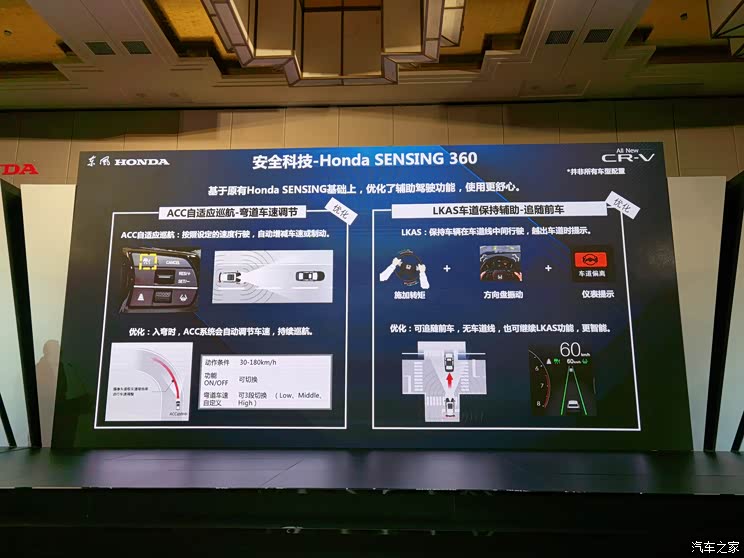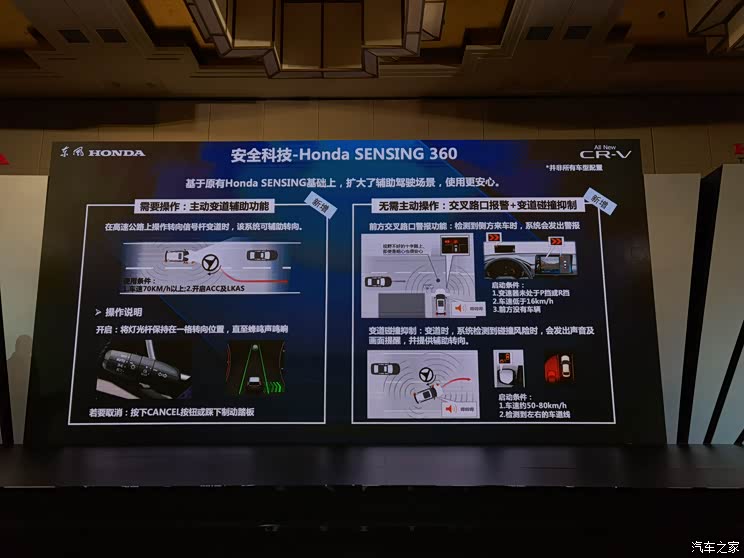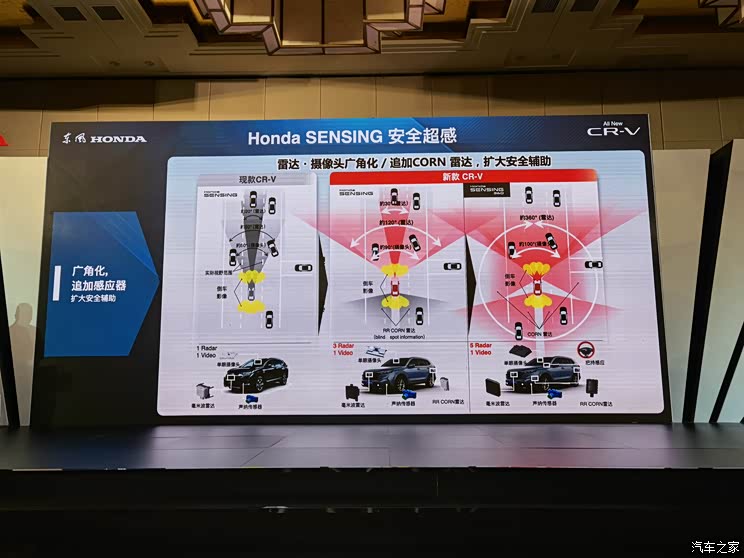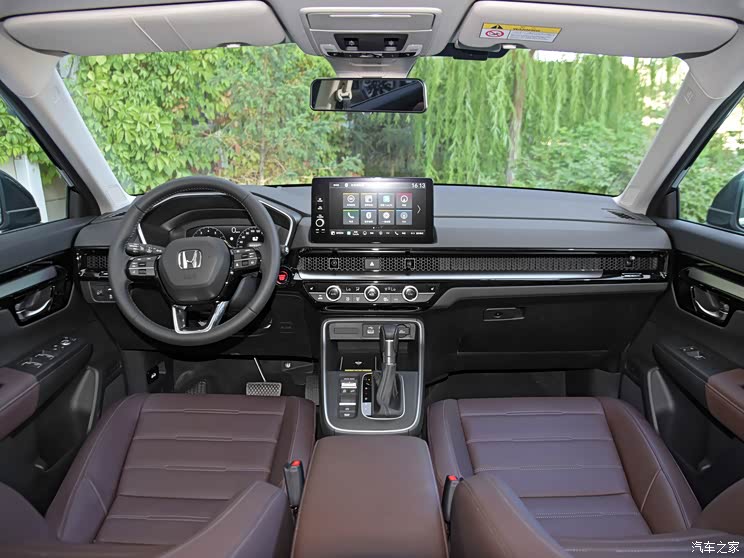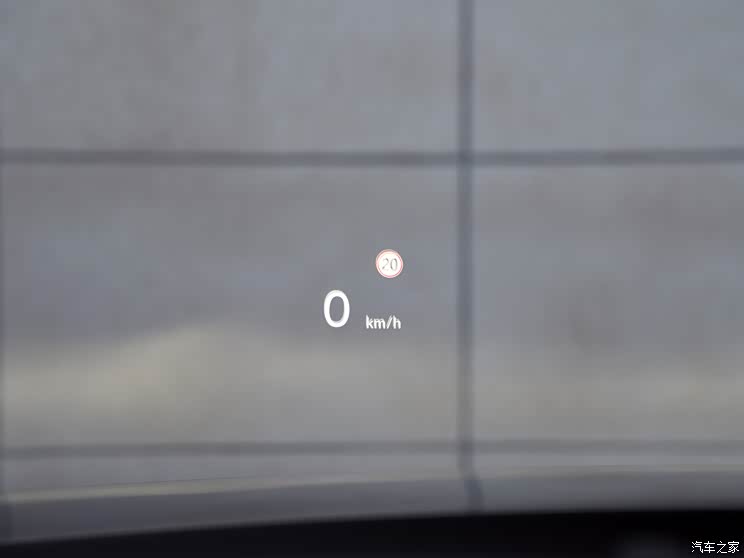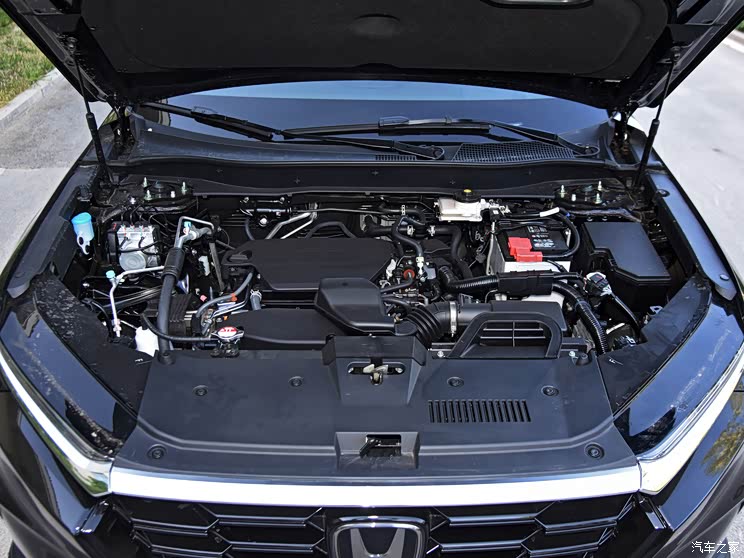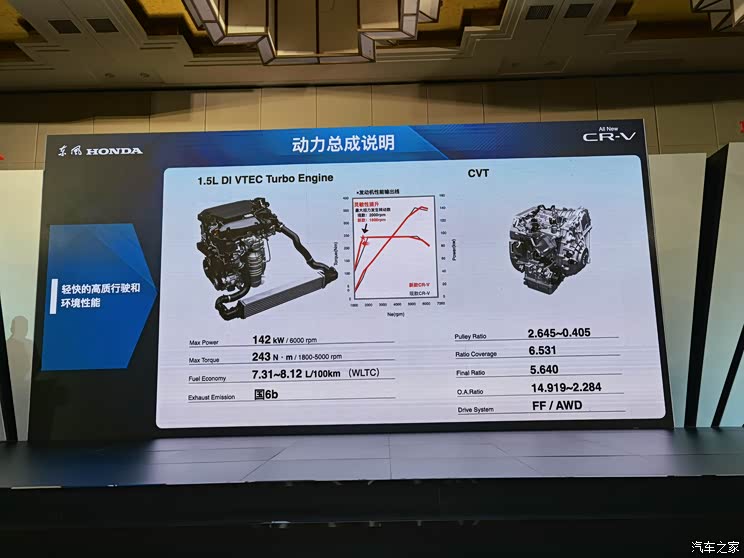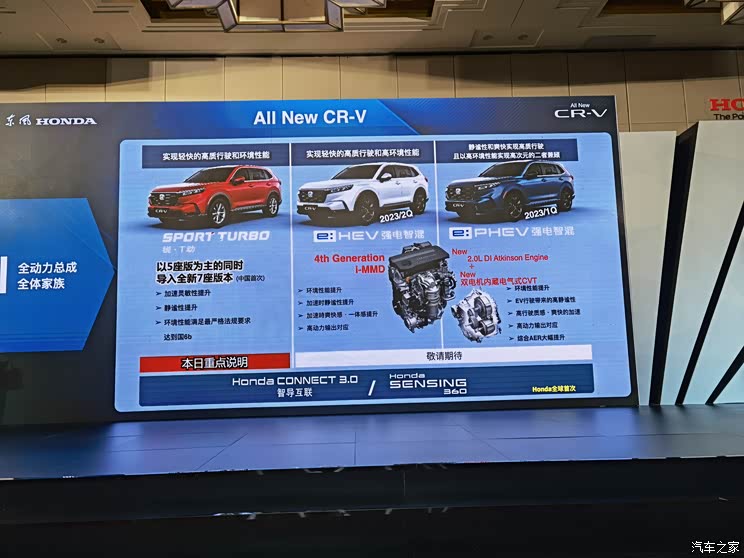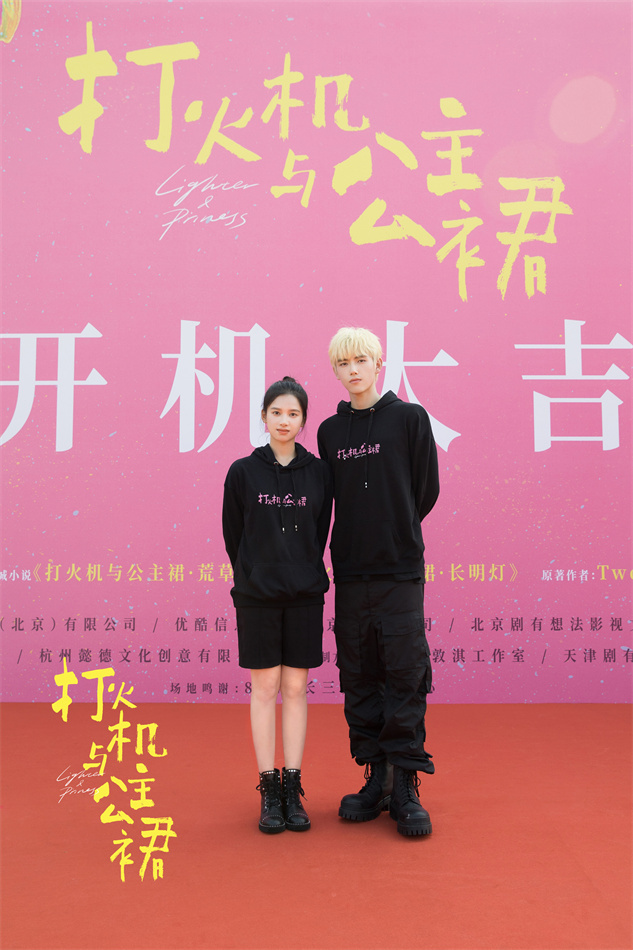Abstract: Human society is entering a new era from the information age — — The era of communication. The multiple attributes of communication are constantly evolving, and have gone through the development stages of transmission, interaction, exchange and social construction. In the era of communication, for the first time in history, people are not only the existence of bodies, but also the existence of numbers; At the same time, the ecology of public opinion, the pattern of media and the mode of communication have undergone profound changes. We should objectively, comprehensively and rationally understand and understand the law of communication in the communication era, actively undertake the new obligations and responsibilities entrusted by the new era, and strive to build a healthy, pluralistic, equal and orderly communication field and environment suitable for the communication era, so that the biggest variable of new media can become the biggest increment to promote social development.
Keywords: information age, communication effect, mainstream media, social media
【 Chinese Library Classification Number 】 G206 【 Document Identification Code 】 a
【DOI】10.16619/j.cnki.rmltxsqy.2021.09.011
Hong Junhao, Distinguished Professor of School of Journalism and Communication, Shanghai University, Professor of Communication Department, new york State University, USA, and researcher at Fei Zhengqing Center, Harvard University. His research interests are communication theory and research methods, international communication and international politics, media and social development, and the impact of new communication technologies on society. The main Chinese works are New Trends in Communication (up and down) (editor-in-chief), Communication (editor-in-chief), Interpretation of the New Trends of American Government Media in the Post-Cold War Period (paper) and Necessity, Urgency and Challenge of International Communication of Chinese Culture (paper).
Inadvertently, it seems that quietly and unconsciously, we are experiencing an extremely important change and an era transition: we are entering a new era. In recent years, many scholars at home and abroad have suggested that human society is undergoing a great change, that is, from the "information age" to a new era — — "the age of communication" These two times are closely related and have a lot in common, and they are two inseparable times; At the same time, they also have very distinct differences. These differences describe the essential characteristics of two different eras.
Theoretical definition of information age
From the 1960s to the 1970s, some sociologists in the United States put forward theoretical views on the information age, arguing that a new economic and social paradigm is emerging in some developed countries, and its formation is mainly based on the development of information industry and related service industries (Feenberg, 2019). These theories point out that in the information age, information and knowledge spread rapidly with the continuous development of technology, and the emergence of the Internet enables most people around the world to obtain and use information and knowledge anytime and anywhere. More importantly, advanced information technology is progressing and updating all the time (Coleman & Ganong, 2014). Although there have been different opinions and debates on the relevant theories of the information age, the theory of the information age has had a great impact on predicting and planning the development direction of human society.
The opening of the Internet has enabled hundreds of millions of ordinary people to enter the information age, which has opened a truly global information age. Based on various types of political participation and discussion in e-mail, online forums and blogs, computers leave engineers’ desks and enter ordinary people’s daily lives, changing from simple information communication technology to social communication media. From this point of view, hundreds of millions of ordinary users have changed the nature of computer networks and affected the development direction of this technology. This change has profound theoretical and social significance.
The arrival of the information age benefits from the evolution and development of computer miniaturization. This period began with the advent of personal computers in the late 1970s, until the Internet was adopted by most people in the 1990s. Information technology has changed people’s daily life, education and life system, and the modernization process of human society is further accelerated based on global communication and network development, so the information society is regarded as one of the important symbols of modern society. At the same time, information technology has also become an important reason to make the organizational structure and management of human society more orderly.
The term "information technology" covers many fields related to computer technology in the past decades. In the "information age", a new stage of the development of human society, it is difficult to find a field or industry that has not been widely influenced by information technology. The Internet is a decisive technology in the information age, and the great changes it brings make the whole human society closely linked through the Internet. From a technical point of view, the internet connects computers together; Theoretically, the Internet connects the whole world, the political, economic and cultural fields of all countries, and people living in all corners of the world. In the 1990s, the overall popularity of the Internet and the great changes caused by the rapid development of Internet technology made it a universal and common reality for people all over the world to share information (Negroponte, 1995; Castells, 2019)。
Theoretical definition of communication age
The successor of the information age and its next paradigm is the communication age. If the representative features of the information age are "information" and "information/informing", then the representative features of the communication age are "communication", "communication/communicating" communication ". The word communication comes from the Latin prefix co- (meaning "with" or "together") and the root munia (meaning "sharing", "giving" or "serving"). Therefore, the formation of communication needs the participation of others, and it is a collective activity in which people jointly create and share meaning. Although we sometimes say "I spread" or "you spread", in fact, communication cannot be done by individuals alone, but it must be done by people together. For example, reciting by yourself is not communication, but speaking to others is communication. This is the truth. Communication is a collaborative process of using information to create and participate in social reality, our individual identity, the relationship, organization, community, and the exchange and communication of culture and ideas.It is all accomplished and realized through communication. These aspects are all important parts of social reality, or a series of social judgments recognized by group members.
There are complex and significant differences between informing and communicating. One of the most important differences is that informing is one-way and static; Communicating is two-way and dynamic, which usually leads to interaction. The main form of information communication and communication technology in the communication era is social media, and the main function of social media is communication. Social media brings communication, interaction, dialogue and joint participation, which is completely different from the communication mode mainly based on one-way notification. In the era of communication, media and technology are integrated into all fields of society and people’s lives. Communication travels through time and space in a pluralistic background, and information is transmitted, exchanged, communicated and interacted through new media technologies in virtual or real scenes.
Although the broad audience groups are at different ages, almost all of them have entered the communication era from the information age at the same time. The generation born from 1930s to 1950s, the millennial generation born at the beginning of this century, and the generation born later than them have all been deeply influenced by the change of communication mode. People are not only related to each other through the Internet, but also interact through various social media, and everyone is spreading and being spread. In the information age, people have known the Internet technology, but they have not made more connections through this connection. In the era of communication, people connect, participate and interact, which makes the whole human society become an integrated and endless communication field. This new concept regards virtual space and communication technology as places and ways for people to develop, maintain and promote their association and interaction with others. It not only involves the traditional concept based on the principle of face-to-face communication, but also promotes the latest development of the concept of media communication.
The "communication" in the communication era highlights three key components: "connecting", "engaging" and "interacting". The interpretation of these three components has formed a more contemporary and relevant communication concept on the basis of the traditional principles of communication. On the one hand, with the continuous integration of technology, media and communication, communication has penetrated into the daily lives of hundreds of millions of people; On the other hand, the rapid increase of social media and social networking sites based on mobile computing technology has greatly increased the convenience of people’s non-face-to-face communication, and the resulting complexity also makes people urgently need better communication skills and stronger, independent and critical (more accurately means "critical" in Chinese) thinking and judgment.
Fundamentally speaking, communication is dual, which includes "creation" and "participation". The ancient Greeks called these two functions of communication poiesis (creation) and praxis (action). In the past, most scholars paid more attention to communication practice, or paid more attention to how to use communication as a tool to accomplish specific tasks. But in recent years, the poiesis attribute of communication has begun to get more attention. Recognizing that communication can produce new social reality is of great significance to how to spread and how to judge the influence and social role of communication.
For communication, connection is fundamental, and the current connection mode has also changed greatly. Face-to-face communication and media communication were once regarded as two completely different and independent behavior modes; Now, they are closely related. In essence, the whole process of communication is about connection and participation. Connection means that communication can connect us with others, groups, communities, social institutions and cultures. The mobility of modern information technology makes it easier for people to connect than ever before. No matter day or night, people can get in touch with almost anyone who needs it, and they can get news and information from all over the world by tapping a few keyboards or touching a tablet computer. In this connection, communication is regarded as the core of the process of creating and participating in social reality. People spread in the dynamic and complex system of personal and social relations, and everyone is more related to others than ever before. However, connection itself is not enough to fully reflect the potential of communication in changing people’s respective identities, relationships, communities and social reality. Communication must also have participation and interaction. Simply "connecting" to the Internet or social networking sites can not fully realize people’s desired communication will and purpose, but must "integrate" with each other and achieve participation. The era of communication is an era in which communication, technology and media are integrated, and it is an era in which "integration" permeates the daily lives of hundreds of millions of people.This kind of integration refers to the way in which many forms of media communication and face-to-face communication overlap and intersect in people’s daily life. This unprecedented degree of integration not only affects the question of "what we do" but also affects the question of "who we are". For the first time in history, people are no longer just a physical existence, but also a digital existence in the new communication technology: people maintain the existence of physical reality and network virtual dual space at the same time, and the accessible boundaries and influence of individuals on the world far exceed the physical space they occupy. From the digital point of view, individuals can travel through vast time and space. One of the most important effects of communication integration is that it greatly increases our chances of connecting with others, both in quantity and type. However, while releasing great potential, integration also brings new challenges. When we use technology, media and communication to communicate, a large amount of information may distract our focus and blur the focus of communication, which to some extent makes the effect of communication difficult to last. Relevant research results show that the hot spot effect of communication usually lasts only seven days, or only less than two or three days or even shorter.
In the era of communication, communication, technology and media will fully penetrate into almost everyone’s daily life. Older people are called "digital immigrants" (people who learn and use digital technology in their later lives). They have witnessed the process of the increasing popularity of digital information technology in daily life: no matter what you do or where you go, you can’t do without digital information technology, media and communication. The "digital protogeneration" refers to a generation whose digital technologies, such as computers, mobile phones and video games, already existed at the time of their birth. They grew up in a world infiltrated by new information communication technologies represented by social media. Today, mobile devices have become the main online tools in most parts of the world. In addition, experts predict that we will soon see more radical communication integration and penetration. We have become living in both the physical world and the virtual world — — An independent but closely connected virtual world that is complementary to the real world — — The first generation.
The network world is a space that integrates all information, which provides a new infinite space and platform for people to create, publish and spread information. The relationship between people in this space, the community established and the communication carried out are all realistic and will bring real-time experience. However, this space is virtual and does not have the same physical existence as the real society. Virtuality is a general term for the reconstruction of familiar physical space in cyberspace. Now, VR (Virtual Reality), AR (Augmented Reality) and MR (Mixed Reality) have become our very familiar existence and experience. Face-to-face communication and non-face-to-face communication with digital technology have naturally penetrated and integrated into people’s daily life, and complement each other. People often use both at the same time, or freely move in and out and switch between these two worlds. Many people have realized the seamless transition between virtual and real situations.
Why did you enter the "communication age" from the "information age"?
Why are people not satisfied with receiving and obtaining information, but also want to further participate in communication? Why are more and more people eager to communicate, keen to participate in communication, and willing to spend time and energy on communication? This involves both psychological and social reasons. Gregory Shepherd, a communication theorist, pointed out that among all human desires, two are particularly "sincere": on the one hand, we always want to have a certain right to speak, so that we can decide our own destiny to a certain extent — — No longer a "puppet" of fate, a little person nested in a gear, or a buoy with no anchor chain fixed at sea; On the other hand, we don’t want to be alone (Shepherd; St. John & Striphas, 2006)。 Communication can help people satisfy these deep-seated desires and bring some elements from potential fields into practical fields (Frey & Carragee, 2007). It connects us, establishes consensus, relationship and common vision about reality through interaction and participation, and enables people to take control of their own destiny, seek infinite possibilities in the future and make their own contributions.
In the traditional media era, news and information are made public through a "highly centralized" production mechanism. A few people control the power to spread to the public, and the news media controls what information can be spread. This one-way communication mode leads to the situation that few people participate in news communication (Lanham, 1993; Warnick & Heineman, 2007)。 In the new media era represented by social media, communication scholars began to explore the infinite possibilities of interactive media development (Davis, 2011; Ledbetter et al., 2011)。 This change embodies a new mode of communication, and also marks the beginning of a new era. The changes brought by the new media have made a key change in interpersonal communication and social communication, including news communication: from an entity to a wide audience, it has become mutual communication, exchange and communication between many people (Peters, 1999). The theoretical significance of this change is that the new media, represented by social media, provides an unprecedented new platform for users all over the world to talk to each other and provides unlimited possibilities for hundreds of millions of people to spread their ideas, opinions and information to others. In other words, the new media has innovated two-way or multi-directional communication, in which the audience can respond to news, information and news, rather than simply receiving them.
The new media enables people to interact and spread by sending and receiving messages. With the invention of various interactive communication technologies, people began to have new channels of communication, communication and exchange. For ordinary people, the new media is more democratic and fair (Warnick & Heineman, 2007). People enjoy the right of free communication and numerous information sources, and can establish closer relations with others and society through the media. All this is mainly attributed to a series of changes in the field of information and communication since the mid-1990s. So far, the most important representative of this new information and communication technology is social media (Nickson, 2016). Since its appearance, interactive communication information technology has become the most important tool for people’s daily communication, and has greatly changed people’s way of life, behavior and thinking.
The emergence and rapid development of new media represented by social media have brought extensive and profound changes to human society in just over 20 years. So, what is the difference between the new media and other media before? Why does it have such a far-reaching impact on people’s lives and society? Although every innovation and mutation of communication technology in history has brought great changes to human society, every change in the past has occurred in a certain range and has certain limitations. For example, from the printing era (including books, newspapers and magazines) to the film era, and then to the radio and television era, every revolution in communication technology has brought considerable influence to the whole human society. However, there has never been an impact so great, so extensive, so comprehensive, so profound and far-reaching, so subversive as that brought by the new media represented by social media today.
The influence of new media such as social media stems from its own essential characteristics. Marshall mcluhan, a Canadian communication scientist, said in his book Understanding Media: On Human Extension that, in essence, medium, that is, media or media, is an extension of human body (McLuhan, 1964). All forms of communication technology before are far from the "extension" of new media such as social media to the human body. This extension can be said to be an infinite extension beyond time and space. From a theoretical and technical point of view, in the case of connecting to the Internet, the information sent through social media can be instantly received by people in any part of the world, and such a huge "power" is indeed unprecedented. As a new social force, the new media has brought subversive and revolutionary changes to the communication mode. The "revolution" here does not refer to violent and bloody changes, but to sudden changes and great changes. Compared with evolution (mostly gradual and slow evolution), revolution usually refers to great, extremely fast and extremely strong change.
Another fundamental difference between this kind of new communication technology and traditional communication technology is that the new communication technology is much simpler and easier to connect with society and its members, and the possibility and convenience of interaction between social groups and individual intervention in social affairs have been greatly improved, forming an "undifferentiated" communication paradigm, which is why there are nearly 1 billion new media users in China now. The significance of this "indifference" lies in the fact that there is basically no limitation on the scope of users from the economic and technical aspects.
Another extremely important and profound change brought by the new media, represented by social media, is the integration of the finite real world and the infinite virtual world to form another new world. This brand-new and truly infinite world, which is composed of two worlds, is not only a brand-new concept, but also brings a brand-new life and survival experience. People can quickly adapt to it and accept it without complicated transformation and adaptation process, and become more and more attached to it and inseparable from it.
According to the theory of mass media, the media has an impact on people and society from two levels: one is the macro and social level, and the other is the micro and individual level, which are overlapping. On the one hand, the influence of new media on the "new world" is superficial and obvious, that is, it has brought great changes to people’s way of life, behavior and thinking, and the scope of influence has extended from individuals to society, which has greatly changed the current social operation mode; On the other hand, it is also a more important influence, which is invisible, invisible and deeper to the whole human society. It is mainly reflected in promoting, forcing or causing the reorganization of social structure, which has gradually turned the original unified and integrated society into a number of "small societies", thus bringing unprecedented challenges to the formation and management of the entire political system and ideology. Nowadays, the phenomenon of social fragmentation and tribalization is a prominent manifestation of social restructuring, and this influence and change trend is unstoppable. Associated with this, every fragmented small society has its own "opinion leaders", that is, every virtual "tribe" has its own political inclination and value recognition, that is, it has a certain degree of political ideology and cultural value system that belongs only to their group. This kind of influence and change is almost in every "Tribe "has different degrees of presentation. As the most important discovery of secondary communication theory, "opinion leader" plays a huge role in community communication. In this situation, many top-down social management or governance models will need to be redesigned and formulated because it is difficult to achieve the expected results in the new social form of combining reality and virtuality, which has brought unprecedented challenges to social management and network governance to a great extent.
At the same time, the influence of new media on individuals and society is constantly interacting. For example, the new media has changed people’s way of life, behavior and thinking, which has promoted the reorganization of social structure, and the reorganization of social structure and the resulting changes in social management or governance mode will in turn affect the use and development of new media. Accordingly, the further development of new media will bring about further changes in people’s life, behavior and way of thinking, and this change will bring more far-reaching influence to society. In short, as long as the new media continues to develop and change, it will bring new influences to individuals and society. This has been a common phenomenon in the world in recent years, and it will also be the general trend of most social evolution in the world for a long time to come.
Why can social media promote a new era?
Interaction, personalization, flexibility, creativity and constant development and change are the main characteristics of new media represented by social media in the communication era, and they are also the communication characteristics in the communication era. In the era of communication, anyone can be an author, editor, artist, educator, musician, etc. of news or information release, and can also be the creator of UGC(User Generated Content). Different from the traditional media era, interactive media allows each user to choose what to say, when to say it and how to say it. By downloading, uploading and updating, people search the latest information sources and share the information they need and want. As one of the most important features of new media, interaction is a kind of communication phenomenon that is not limited by distance through social media, that is, by sending and receiving almost real-time digital coded information, users can spread in two-way or multi-way in a dynamic environment, such as posting comments under online articles such as blog posts.
Another notable feature of new media lies in its personalization. Communication in different environments or different interactive backgrounds has its own unique environmental or situational characteristics, which affects how information is used and how meaning is constructed. In the era of communication, the boundaries between communication environments are becoming more and more blurred and overlapping. Communication is often a mixture of multiple environments, each of which may include face-to-face communication, media communication, or some form of combination of the two. Today’s communicators can share their information with a wider audience by using emerging new technologies, and the audience can also actively participate in it through online comments. Although newspapers, books, radio and television are all carriers of mass communication, there is almost no interaction between producers and audiences of news in this kind of mass communication. It is also for this reason that mass communication is mostly considered to be one-way in history. Although the emergence of the Internet has enabled mass communication to achieve interaction, for example, users have the opportunity to interact to a certain extent through comments and ratings; But compared with social media, this interaction is still primitive and basic. Social media provides more personalized opportunities for communication, which makes the boundary between mass communication and interpersonal communication more blurred. Based on the personalized platform, the new media has established relationships and paths with its users, and provided specific users with the information they want at a specific time and in a specific way. Although such a push mechanism also has its drawbacks, it may limit the views and information that users are exposed to, but more importantly, the new media has built an open and shared stage.It provides a platform for users to express themselves to others, and also creates endless possibilities for communication. This involves a core idea of the communication era, that is, everyone should have and can have the opportunity, means and ability to spread — — Get instant information and express yourself.
New media has been changing and developing. With the continuous progress of information and communication technology, people’s interaction and communication style has changed from the usual face-to-face communication to a new communication field, that is, communication and interaction in an infinite but anonymous environment (Walther & D’addario, 2001; Walther, Loh & Granka, 2005; Arvidsson, 2006; Ellison, Heino & Gibbs, 2006)。 Scholars engaged in CMC (Computer Mediated Communication) research believe that computers will reshape interpersonal communication, and now this assertion has come true (Poster, 1990; Sproull & Kiesler, 1991; Hiltz & Turoff, 1993; Ledbetter et al., 2011)。 Compared with face-to-face discussion, non-face self-disclosure through new media becomes more comfortable for users, and more and more people show stronger willingness to self-disclose. It can be seen that the new communication technology has not only changed the individual mode of communication, but also gradually changed the main mode of communication in society (Poster, 1990; Goffman, 1999; Walther et al., 2005)。 The new communication technology that changes the communication mode of billions of people is social media represented by Facebook, Twitter, Flickr, WeChat and Tik Tok (Palomares & Lee, 2010), and these social media are the most important new developments in CMC field (Greenhow & Robelia, 2009).
Evolution and development of communication attributes
In the past hundred years, the multiple attributes of communication have been continuously developed and evolved, and scholars have been constantly exploring and understanding them. Based on the combing of communication scholars, the evolution and development of communication attributes have mainly gone through the following stages (Edwards, et al., 2012).
The "transmission property" of communication was first recognized and defined in the 1940s (Shannon & Weaver, 1949), which emphasized that communication is a linear and one-way transmission of information, that is, information sources send messages to receivers through a channel or medium, and regard communication as a channel and process of information transmission from one person to another. Of course, there are obvious shortcomings in defining this attribute, that is, the sender is regarded as active and the receiver is passive; In fact, most communication is two-way. Therefore, after this, the "interactive nature" of communication has made up for this defect well.
In 1950s, the "interactive nature" of communication was put forward, pointing out that communication is a two-way behavior process (Schramm, 1954). It absorbs the basic elements of transmission metaphor, but adds two important components: feedback and experience. Feedback refers to the receiver’s reaction to the sender’s message. Based on feedback, senders can adjust the information they transmit in real time to increase the chances of successful communication. In addition, because each sender and receiver is a unique individual, this model also involves the field of experience, such as the attitude, concept and background of each of us in the process of communication. However, like the previous transmission attribute, this attribute still treats the sender and receiver separately in essence.
In fact, communication also has the "exchange property", that is, it recognizes that people are connected through communication and make achievements through communication, which is beyond the level of (trans-) information exchange. The exchange property of communication put forward in 1960s abandoned the concept of single sender and receiver, and pointed out that participants are both senders and receivers, and they are related to each other. In communication, based on information exchange, the relationship between participants and them will change with communication. The reason why communication affects its participants is that each message has two dimensions: content and relationship (Watzlavick & Beavin, 1967). The content of information refers to its superficial meaning; The relationship of information refers to how information is expressed and its relationship with participants. The relational dimension of information not only reflects the relationship between related people at that moment, but also shapes their future relationship.
After that, the "social construction attribute" of communication is put forward, which further expands the idea that communication affects communicators. Specifically, the attribute of social construction emphasizes that communication can shape and create newer and better social reality (Berger & Luckmann, 1967; Craig, 1999)。 The social construction attribute of communication expands the role of disseminator from sender/receiver to co-creator of shared social world, that is, participants shape practical, true, acceptable, credible and feasible social reality intentionally or unintentionally through joint efforts. In a certain sense, news is far more than a collection of pieces of information, but the cornerstone of social reality. The attribute of social construction assumes that people further shape themselves in the process of communication with others. At the same time, the process of communication is also one of the main means for people to participate in social development and construction.
From the above analysis of communication attributes, it can be clearly seen that every new attribute of communication is put forward on the previous basis, and through continuous innovation and progress, the great power and social role of communication are gradually recognized and revealed. Judging from the evolution of world history, many social changes began with or related to the evolution of the communication field, and then the evolution of the communication field in turn affected and promoted the evolution and development of the social field. Therefore, making full use of the power of communication to social change can build a better social reality for human society. Over the years, the understanding of the nature of communication has been developing and deepening, and the important role played by communication in creating social reality has been generally recognized.
In addition to the social level, from the personal level, the communication attributes that individuals understand and agree with will also affect their life, behavior and way of thinking. For example, some people think that communication is simply a means of transmitting information from one person to another, that is, transmission attributes; Others believe that communication is a process of cooperation, involving content, relationship and environment, that is, exchange of attributes; Others realize that communication has the power to change and create new social reality, that is, the social construction attribute of communication. Research shows that those who realize that communication can be used not only to convey information, but also to achieve goals, change and create new social reality usually have stronger communication ability (O’Keefe, 1988). In the era of communication, individuals, groups, companies, organizations and even countries with better and stronger communication ability often have more and better development opportunities and prospects.
Power, obligation and responsibility of communicators in the era of communication
In the era of communication, everyone has become a conscious or unconscious, conscious or unconscious, positive or negative, successful or failed communicator. Therefore, in this new historical era — — In the era of communication, everyone, as a communicator, should bear the new obligations and responsibilities entrusted by the new era.
With the continuous development and popularization of new media represented by social media, new modes of communication have been integrated into the daily life of the vast majority of people all over the world. In the era of communication, almost every user has his own "media", so social media is also called "self-media" figuratively and accurately in China. Every self-media user "controls" the "media" he owns. With the two-way and multi-directional communication becoming the main forms of communication, the dialogue between many people has been realized for the first time in human history. In other words, anyone in the communication can become a publisher, editor, journalist or even an expert or celebrity, which provides an unprecedented vast space for the dissemination of information, the deepening of opinions and the integration and development of politics, culture, commerce, entertainment and education. In essence, the current mode of communication has undergone earth-shaking changes. In this new era of communication, communication ethics is of special importance.
Morality is a code of conduct based on respect for oneself, others and the surrounding environment. Simply put, morality involves the behavioral judgment of right and wrong. As a communicator, everyone must shoulder their own social and moral responsibilities, and only with moral communication can the well-being of individuals and society be improved. Social media is a new communication technology, communication mode and communication tool with the fastest development, the largest number of users and the greatest influence so far. In the era of social media, the self-media user is no longer just a pure self-media user, but also a media person and a media owner. In a legal sense, it naturally becomes an unregistered but actual media legal person. Every sound, every message and every picture made by people, and every spread in the real world or virtual world, may have a certain impact on others or society. Therefore, as a media legal person from the media, we should also be cautious about what we say, the image we create and the views we express, and bear the corresponding consequences for the possible impact.
Since self-media users have multiple identities, namely users, media owners and legal persons, self-media (social media) users need to fully understand the obligations and responsibilities at these three levels. The first is the personal level, that is, the moral responsibility that individuals should have in communication behavior; The second is the social level, that is, the social responsibility that individuals should have in communication behavior; The third is the legal level, that is, the legal responsibility that individuals should have in communication behavior. At present, the vast majority of self-media users are far from realizing that they should abide by these obligations and responsibilities, let alone consciously abide by them. Under such circumstances, on the one hand, it is necessary to strengthen relevant education guidance and enhance the sense of responsibility of media users; On the other hand, it is necessary to formulate, improve and implement relevant laws, regulations, policies, regulations, systems, articles of association, etc., and guide media users (that is, media owners) to abide by the personal, social and legal obligations and responsibilities that they must undertake as media legal persons. In the study of communication, it has always been emphasized that the media must bear corresponding social responsibilities while pursuing freedom of the press and freedom of speech, and seek a balance between the two; At the same time, when the two conflict, we should give priority to social responsibility. This is also completely applicable to countless users/owners of self-media now. Social media platform is not an extra-legal place where individuals can use their own "media" to spread at will without any responsibility; On the contrary, as a "Media people, the communication behavior of media users must be based on moral considerations and bear corresponding obligations and responsibilities.
How to ensure that communication behavior can be responsible to oneself, others and society? Habermas, a communication philosopher and ethicist, believes that moral communication can promote autonomy and sense of responsibility. The spread of morality respects the right of individual choice and self-determination, and at the same time encourages and demonstrates the sense of social responsibility. He pointed out that communication that deprives people of their free will is potentially dangerous, because they deprive people of the opportunity to make wise decisions and control their own destiny. At the same time, Habermas also stressed that in the process of realizing freedom, people should not only be responsible for themselves, but also bear common responsibilities to others and the community. The greater the power, the greater the responsibility. Information and interaction are powerful elements in constructing social reality (Habermas, 1979), that is to say, the increase of a communicator’s communication power means the increase of his responsibility accordingly.
With the evolution and development of communication attributes, the moral standards of communication also change. For example, the information transmitted by the communicator to the receiver must be ethical, and the first thing is that the message must be true, truthfully reflect the real situation, and have factual integrity. The interactive attribute recognizes the process of feedback and that everyone has a unique field of experience. Therefore, the spread of morality needs to provide opportunities for feedback and respond positively to it. The nature of exchange emphasizes that people are connected with each other through communication. Therefore, it is necessary to realize the influence that the spread information may have on participants and their relationships. Finally, the attribute of social construction emphasizes that communication can create social reality. Therefore, to regard communication as a process of social construction requires special attention to two points: strength and restraint. Power refers to the power and freedom to use communication to create the social reality people want. But at the same time, we must realize that the social reality they create may be a "cage" and face the constraints or restrictions of social reality. Therefore, the same is true of the process of hoping to achieve change and create new social reality through communication, which always contains both strength and constraints.
社交媒体影响社会的类型和主要因素
为什么在有些国家和地区,以社交媒体为代表的新型媒体产生了很大的影响,而在另一些国家和地区的影响却没有那么明显呢?这是因为新型媒体对不同类型的国家地区、社会形态的影响是不一样的。关于以社交媒体为代表的新型媒体对社会影响的不同情况,相关研究将其归纳为四种类型。第一种是“核武器型”,认为新型媒体对社会的影响会导致社会全面的、颠覆性的突变。比如,在新型媒体的助推下,有的国家在一夜之间政权发生了更迭,如“阿拉伯之春”“茉莉花革命”“颜色革命”等等。第二种类型,把新型媒体看成是引领和推动激进的社会变革的发动机,因此被称之为“发动机型”。2016年美国总统选举前,学界还普遍认为新型媒体的“核武器型”和“发动机型”的影响通常发生在不发达国家,或是政治体制趋于专制型或威权型的国家。然而特朗普赢得2016年美国总统选举证明了实际情况并非如此。特朗普利用社交媒体的影响力来宣传自己的竞选主张,与反对他的主流媒体博弈,从而战胜对手,赢得了选举。It can be said that without new media, it is difficult for Trump to win in the 2016 general election. This example shows that the influence of new media is not limited to underdeveloped countries and authoritarian and authoritarian societies, but may also occur in economically developed countries and politically open societies.
The third type of social impact of new media represented by social media is "catalyst type", that is, new media promotes and promotes various forms or degrees of social transformation. Social transformation and social change are different in theoretical meaning. Samuel huntington also defined social transformation in his book Clash of Civilizations and Reconstruction of World Order (Huntingdon, 1996). Social transformation is different from social change, and social change is also different from social revolution. There is a strict distinction between the three. The reason why the new media is called "catalyst" means that although the new media itself is not a subject leading the change, it can or can be used as an important or huge promoting force to promote social transformation under the guidance of other social factors.
The fourth type of social impact of new media, represented by social media, is "platform type", that is, it is believed that the emergence of such new media has produced or expanded public space in society. In the past, it was generally believed that this type of influence appeared more in western society. But in recent years, this influence is not limited to western society.
In addition to the four types discussed above, there is a fifth type of influence of new media on society, namely "lubricant type". As China has been advocating in recent years, the development of new media is conducive to enhancing and promoting communication between the government and the public, thus enhancing mutual understanding and communication effect, enhancing mutual trust and transparency of social governance. As a public space and social communication platform, new media has become a new field for the public to express their opinions. At present, China is in the stage of social transformation, and the lubricant function of new media is urgently needed to be borrowed and applied to practice.
This involves an important question, that is, what factors determine the influence of new media represented by social media on society? Why do some play a more positive role, while others play a more negative role? To answer this question from the theoretical level, generally speaking, it mainly depends on three factors.
First, generally speaking, the extent of media’s influence on society depends on the political structure and social system. The social political structure and social system mentioned here do not involve value judgment, which political structure and which social system are good or bad, but only discuss which political structure and which social system it depends on. If they are in the same political structure and social system, it depends on their development stage at that time. Every society is at a specific stage of development at a time. According to the famous sociologist Rostow’s theoretical model of modernization and socio-economic development (Rostow, 1960), the modernization development of a society can be divided into five stages: the first stage is the basic accumulation stage, the second stage is the economic take-off, the third stage is the sustainable and stable development stage, the fourth stage is the prosperity stage for most people in the whole society, and the last and most important stage is the stage when the society enters a complete social security system. If the society is only in a state of rapid development, a complete social security system will not be built in the end, nor can it be regarded as a real modernization. For those social forms that belong to the same social system, it depends on what stage of development they were in at that time, that is, in the stage of steady development, transformation, or mutation, and so on. In different social systems and different stages of social development, the influence of new media on society and its role are different.
Second, the influence of new media on society also depends on the social role played and assumed by the media. The word "society" in front of "role" emphasizes its overall role at the social level. Take social media as an example, it is usually translated into social media in Chinese, but this translation is limited and misleading, which will make people think that its main function is social. In fact, the main function and role of social media is social. The overall function is social, which does not mean that it has no social function. But the result of its extensive and unprecedented social function is social function. Therefore, the role of new media in a society is also an important factor to determine its influence on society.
Third, the influence of new media on society depends on its development state and stage in society. In different social forms, new media presents a state of high-speed, low-speed or even "zero development", and correspondingly, its influence on society is also very different. First of all, this influence involves the proportion of new media users to the total population, that is, how many people are using new media in a society. For example, in some African countries, less than one-tenth of people are using new media, so it is difficult to make a big storm for the time being. However, in some societies where more than half or even most people are using new media, its possible social impact is completely different, and its impact may be extremely extensive. Take today’s China as an example. In such a country with a population of more than one billion, the users of new media have reached more than 70% of the total population and more than 90% of the total number of adults. Its influence on society will be incalculable and should be highly valued. Secondly, the influence of new media in a society depends on the quality of new media users, especially young users. At present, a considerable number of users feel that what to do, what to say and how to say in the virtual society is their own right, and they don’t have to be bound by anything, and they don’t have to worry about any consequences. Whether intentionally or unintentionally, this wrong understanding will inevitably lead to irresponsible behavior, which will lead to serious negative social impact. Finally,The influence of new media on a society also depends on the ability of the rulers to manage new media. If the rulers are poor in management or lack of management experience, new media may become a "catalyst" for the color revolution; On the other hand, if well managed, it may become a "lubricant" to promote social communication and social harmony.
The era of communication has come, are we ready?
From the information age to the communication age, there are two basic conditions: one is the necessary condition, that is, the technical foundation of new communication and information technology; The other is sufficient conditions, that is, political and social needs and the requirements of the society at a specific social stage. At present, the era of communication has arrived, but are we ready? Judging from the situation in China, efforts should be made to improve and perfect it in the following three aspects.
First of all, the system of laws and regulations. In recent years, although the laws, regulations, policies, regulations, systems and articles of association that are closely related to the communication behavior of new media and its users are becoming more and more perfect, their effects are not ideal, and their pertinence, timeliness and practical operability are limited, which leads to the need to rely on daily administrative means for management in the later stage, which is not conducive to bringing the management of new media and users’ communication behavior into the track and system of laws and regulations as a whole. There is no perfect system of laws and regulations. In the process of promoting its continuous improvement, we should consider not only the interests of society and the country, but also the development of new media and the rights of its users, so as to make overall plans and take a long-term view.
Second, social media users. A healthy and good communication era needs a healthy and orderly communication field and social environment, and the formation of this environment depends on the good moral cognition and media literacy of social media users. At present, some users believe that since the media era, everyone has their own voice platform, and they can freely choose what they want to say, how to say it, and when to say it, as if they are in a "carnival" with no time limit and no restrictions. In fact, "everyone is a communicator" is also a double-edged sword. While it brings the diversity and equality of communication, it may also bring the mixed and disorderly communication behavior, irresponsible social communication and even intentional social chaos. Due to the lack of necessary media literacy education and self-discipline and discipline in the face of laws and regulations, the media era often presents a state of disorder and chaos. According to statistics, hundreds of millions of false information are flooding in cyberspace every day, which not only seriously pollutes the virtual world, but also seriously pollutes the real world in which we live. Network governance has reached the point where it can’t be cured, cured or cured. However, the ideal communication environment cannot be completely realized by governance; On the contrary, governance can only be an aid, and an orderly cyberspace environment needs to be built on the rationality and sense of responsibility of media users. We should take a "two-pronged" approach, based on a practical system of laws and regulations,With the help of effective media literacy education, we should rely on all users to build a healthy, positive, pluralistic, equal, rational and orderly communication field and environment that is suitable for the communication era.
Finally, the traditional mainstream media. Although social media or self-media are also called media, they also play the role of media, but they cannot replace the functions of traditional media. Traditional media, especially mainstream media, is an indispensable part in the development of social undertakings, reflecting and representing social politics, culture and mainstream values. At present, the influence of the traditional mainstream media in the "communication era" is declining, and more and more people are used to getting information through social media (from the media), which is full of inaccurate, one-sided and extreme information, and even rumors that intentionally confuse people and mislead the public, making it impossible for people to know the truth in time in the noisy and mixed communication field. Therefore, many scholars call this period the "post-truth era" or "no truth" Shi Anbin and Zhang Yaozhong, 2016; Shi Anbin and Yang Yunkang, 2017; Shi Anbin, 2019). At present, the traditional mainstream media should shoulder the unshirkable responsibility of the communication era, actively build a strong communication team and group with professional journalism ability and high social credibility, and provide the truth to the whole society at the first time when news and social events occur. At present, China’s traditional mainstream media still have some room for improvement and efforts in the above aspects. We should actively study and take practical measures to shift the main source of information for the audience from social media/self-media to mainstream media.Actively respond to the new expectations and requirements of the society and the public for the traditional mainstream media in the communication era.
At present, among the three traps that China society needs to avoid, namely "Tacitus Trap", "Thucydides Trap Trap" and "Middle Income Trap", "Tacitus Trap" is the most challenging and needs to be avoided. The formation and development of "Tacitus Trap" is closely related to whether the mainstream media in a society has strong credibility (Pan Zhichang, 2016; 2019). If a country or region lacks mainstream media with broad credibility, it is likely to lead the rulers to fall into the "Tacitus trap"; The mainstream media with broad credibility will, to a great extent, help the rulers stay away from the "Tacitus trap". It is an urgent task to build a powerful, first-class, high-quality and efficient mainstream media with high social credibility. Based on the current reality, China has the foundation, ability and conditions to achieve this task. Compared with the Associated Press, which has been ranked first in the world for nearly a hundred years, Xinhua News Agency has surpassed it in scale and development speed in recent years. At the same time, according to the author’s on-the-spot investigation and research on CNN in the United States and CGTN (China Global Television Network) in China,Compared with CNN, the most widely watched and influential media in the world, CGTN has also achieved a catch-up in many aspects, such as technical equipment and the construction of a "three micro-terminals" new media platform. In addition, in recent years, the number of news communication talents trained and exported by universities in China has far exceeded that of American universities. However, we should also see that although China has many excellent foundations and conditions in hardware, there is still a lot of work to be done to build a strong mainstream media with high social credibility.
To sum up, although the communication era has arrived, we are not fully prepared for the governance of the media environment, the educational guidance of social media/self-media users, and the transformation, growth and development of traditional mainstream media with the times, and there is still considerable room for improvement. We should innovate ideas and measures, strive to adapt to and actively respond to the new requirements and challenges of this new era.
Concluding remarks
The arrival of information age comes from the appearance of information technology, and the arrival of communication age comes from the appearance of new communication technology. The new media represented by social media has the characteristics of indiscriminate intervention, instantaneous communication, high participation and deep interaction, as well as universal, global and holographic, which has led human society into a new era.
The information age has failed to fundamentally change the structure and mode of communication, and the communication behavior is mainly one-way reception and acquisition and "being told", which has different degrees of time and space limitations; The communication era has fundamentally changed the structure and mode of communication, making communication behavior bidirectional, multi-line, dynamic, diverse, interactive, participatory and undifferentiated. It is a kind of behavior and social existence that makes communication more meaningful and has the power to accelerate the development of individuals and society in a more positive direction. In other words, the information age emphasizes the role of information, which is regarded as a material and technical means; In the era of communication, the role of communication is more emphasized, and communication is regarded as a way of life, behavior and thinking. In a sense, in the information age, the role of society is more important; In the era of communication, the role of self/id is more important. The transition from the information age to the communication age, to some extent, shows a major change from the emphasis on "being spread by others" in the past to the emphasis on "spreading to others", more emphasis on initiative rather than passivity, and more emphasis on self/id (including this group, this organization, this enterprise, this unit, this community, this country, etc.). In addition, the main feature of the information age is the mass production of information, and information itself is an economy or industry, even a major economy or industry; Entering the communication era, the characteristics of the information age still exist, but more emphasis is placed on how to spread information.The ability of communication is emphasized. To some extent, communication ability refers to good or good communication, bad or not good enough, poor or very poor; Effective or efficient, inefficient, ineffective or negative. This is a new era that emphasizes the importance of communication and communication power. Therefore, in many cases, whether it can spread successfully, quickly and effectively is often more important than whether it has information. If you have information but can’t spread it, or you can’t spread it effectively, it’s not very different from not having information.
It should be pointed out that such a change does not mean that we no longer want to be informed, nor does it mean that we should completely deny the information age. The need to inform still exists. We have not got rid of the past, and we cannot and cannot get rid of it. On the contrary, in the face of the arrival of new things, we must integrate the old things into the new ones, use them in new ways, and learn to feel and use the new power brought by the new communication era. We need to better understand, recognize and adapt to this new era, and be competent and complete the historical responsibility and great mission entrusted by the new era.
Now most countries in the world have entered the era of communication, and everything around us has been inseparable from social media for a moment. The new media, represented by social media, opened the communication era through the functions of dialogue, interaction and participation, and expanded rapidly around the world. The essential meaning of the word "social" in social media is social communication and social communication, which is also the core content of the word "communication" in the communication era. In the information age, information is the lifeblood of social development and progress, whether for society or individuals. Therefore, how to speed up the development of the information field and how to enable individuals to obtain information more quickly has become the key for individuals and society to achieve better development (Shirazi &Keivani, 2019; Iftody, Sumara & Davis, 2011)。 After the information age, the gap between countries, regions and individuals in obtaining information — — That is, the so-called information gap — — It has been greatly reduced, which also puts forward new requirements for improving communication ability and communication effect. In the era of communication, how to achieve more effective communication and improve communication ability and effect after mastering and obtaining information has become the key to promote individual and social development and progress. Based on these unprecedented changes and status quo, it is particularly urgent and important to make a systematic and in-depth study of the communication era.
According to the latest 47th Statistical Report on Internet Development in China issued by China Internet Network Information Center (CNNIC), by December 2020, the number of netizens in China had reached 989 million. At present, the omnipresence, omnipotence and non-use of information have made profound changes in the ecology of public opinion, the pattern of media and the mode of communication, and the work of news public opinion is facing new challenges. General Secretary of the Supreme Leader (2019) pointed out: "It is necessary to use the achievements of the information revolution to promote the in-depth development of media integration, enlarge and strengthen mainstream public opinion, and consolidate the common ideological foundation of the United struggle of the whole party and the people of the whole country, in order to realize ‘ Two hundred years ’ The Chinese dream of striving for the goal and realizing the great rejuvenation of the Chinese nation provides strong spiritual strength and public opinion support. " It is necessary to scientifically understand the communication law in the communication era, accelerate the development of media integration, make the mainstream media have strong communication, guidance, influence and credibility, make all the people closely United in ideals, beliefs, values and moral concepts, and make the biggest variable of new media become the biggest increment of career development. Unified planning, unified deployment, unified promotion and unified implementation should be made, and efforts should be made to build a long-term stability and grow the industry of governance, so as to build China, a big country with new media, into a powerful country with new media.
At present, the new media represented by social media is still developing and changing with each passing day, and its influence is increasingly extensive and in-depth, which will change people’s life behavior and way of thinking to a greater extent and in a wider range, and continue to promote the continuous reorganization and adjustment of social structure, thus affecting and even influencing the process and mode of social development and change. These situations have been confirmed by many countries and regions around the world. In this regard, we should more objectively, comprehensively and rationally understand and recognize the communication era brought by new media, and make use of its advantages to achieve better development. In a word, we should keep pace with the times, be open and inclusive, and strive to adapt to this new era of communication.
references
China Internet Network Information Center (CNNIC), The 47th Statistical Report on Internet Development in China issued by CNNIC, 2021, http://www.gov.cn/xinwen/2021-02/03/content_5584518.htm.
Hu Yong, 2008, Loud Voices: Personal Expression and Public Discussion in the Internet Age, Guilin: Guangxi Normal University Press.
Pan Zhichang, 2016, "Who hijacked our sense of beauty — — Pan Zhichang reveals four wonderful books, Shanghai: Xuelin Publishing House.
Pan Zhichang, 2019, Four Questions about Tacitus Trap, Journal of xuzhou institute of technology (Social Science Edition), No.2, pp. 183-193.
Shi Anbin and Zhang Yaozhong, 2016, Rethinking the Post-truth in the Age of Social Media, New Internet Age, No.5, pp. 35-42.
Shi Anbin and Yang Yunkang, 2017, Theoretical Reconstruction and Path Reconstruction of Political Communication in the Post-truth Era, International Journalism, No.9, pp. 54-70.
Shi Anbin, 2019, How to Resist the Toxic Post-truth, Global Times, January 14th, 15th edition.
Supreme Leader, 2019, "Promoting Media Convergence to Develop in Depth and Consolidating the Common Ideological Foundation of the Party and the People", Xinhuanet, http://www.xinhuanet.com/politics/leaders/2019-01/25/c _ 1124044208.htm.
Arvidsson, A., 2006, Brands: Meaning and Value in Media Culture, London: Psychology Press.
Berger, P. & Luckmann, T., 1967, The Social Construction of Reality: A Treatise in the Sociology of Knowledge, New York: Anchor Books.
Castells, M., 2019, "The Impact of the Internet on Society: A Global Perspective", MIT Technology Review, https://www.technologyreview.com/s/530566/the-impact-of-the-internet-on-society-a-global-perspective/.
Coleman, M. & Ganong, L.(Eds.), 2014, The Social History of the American Family: An Encyclopedia, Newbury Park: Sage Publications.
Craig, R., 1999, "Communication Theory as a Field", Communication Theory, Volume9, Issue2, pp. 119-161.
Davis, N., 2011, "Information Overload, Reloaded", Bulletin of the American Society for Information Science and Technology, Volume 37, Issue 5, pp. 45-49.
Edwards, C., et al., 2012, The Communication Age: Connecting and Engaging, Newbury Park: Sage Publications.
Ellison, N.; Heino, R. & Gibbs, J., 2006, "Managing Impressions Online: Self-Presentation Processes in the Online Dating Environment", Journal of Computer-Mediated Communication, Volume 11, Issue 2, pp. 415-441.
Frey, L. & Carragee, K. (Eds.), 2007, Communication Activism: Communication for Social Change, New York: Hampton Press.
Feenberg, A., 2019, "From the Information Age to the Communication Age", https://www.sfu.ca/~andrewf/inforcom.htm.
Goffman, E., 1999, The Presentation of Self in Everyday Life, New York: Anchor Books.
Greenhow, C. & Robelia, B., 2009, "Old Communication, New Literacies: Social Network Sites as Social Learning Resources", Journal of Computer-Mediated Communication, Volume 14, Issue 4, pp. 1130-1161.
Habermas, J., 1979, Communication and the Evolution of Society, Boston: Beacon Press.
Hiltz, S. & Turoff, M., 1993, The Network Nation: Human Communication via Computer, Boston: The MIT Press.
Huntington, S., 1996, The Clash of Civilizations and the Remaking of World Order, New York: Simon & Schuster.
Iftody, T.; Sumara, D. & Davis, B., 2011, "Virtually Real: Learning Ethicality in an Online Fan Community", Pedagogies: An International Journal, Volume 6, Issue 1, pp. 16-29.
Lanham, R., 1993, The Electronic Word Democracy, Technology, and the Arts, Chicago: University of Chicago Press.
Ledbetter, A., et al., 2011, "Attitudes toward Online Social Connection and Self-Disclosure as Predictors of Facebook Communication and Relational Closeness", Communication Research, Volume 38, Issue 1, pp. 27-53.
McLuhan, M., 1964, Understanding Media: The Extensions of Man, Boston: The MIT Press.
Nickson, C., 2016, "Effects of the Communication Age", A Technology Society, http://www.atechnologysociety.co.uk/effects-communication-age.html.
Negroponte, N., 1995, Being Digital, Hachette: Hodder & Stoughton.
O’Keefe, B., 1988, "The Logic of Message Design: Individual Differences in Reasoning about Communication", Communication Monographs, Volume 55, Issue 1, pp. 80-103.
Palomares, N. & Lee, E., 2010, "Virtual Gender Identity: The Linguistic Assimilation to Gendered Avatars in Computer-Mediated Communication", The Journal of Language and Social Psychology, Volume 29, Issue 1, pp. 5-23.
Peters, J., 1999, Speaking into the Air: A History of the Idea of Communication, Chicago: University of Chicago Press.
Poster, M., 1990, The Mode of Information: Poststructuralism and Social Context, Chicago: University of Chicago Press.
Rostow, W., 1960, The Five Stages of Growth-A Summary, Cambridge: Cambridge University Press.
Schram, W. (ed) , 1954, The Process and Effects of Mass Communication, Urbana: University of Illinois Press.
Shannon, C. & Weaver, W., 1949, The Mathematical Theory of Communication, Urbana: University of Illinois Press.
Shepherd, J. G.; St. John, J. & Striphas, T. (eds.) , 2006, Communication as… : Perspectives on Theory, Newbury Park: Sage Publications.
Shirazi, M. & Keivani, R., 2019, "The Triad of Social sustainability: Defining and Measuring Social Sustainability of Urban Neighborhoods", Urban Research & Practice, Volume 12, Issue 4, pp. 448-471.
Sproull, L. & Kiesler, S., 1991, Connections: New Ways of Working in the Networked Organization, Boston: The MIT Press.
Walther, J. & D’addario, K., 2001, "The Impact of Emoticons on Message Interpretation in Computer-Mediated Communication", Social Science Computer Review, Volume 19, Issue 3, pp. 324-347.
Walther, J.; Loh, T. & Granka, L., 2005, "Let Me Count the Ways: The Interchange of Verbal and Nonverbal Cues in Computer-Mediated and Face-to-Face Affinity", Journal of Language and Social Psychology, Volume 24, Issue 1, pp. 36-65.
Warnick, B. & Heineman, D., 2007, Rhetoric Online: Persuasion and Politics on the World Wide Web, New York: Peter Lang.
Watzlawick, P. & Beavin, J., 1967, "Some Formal Aspects of Communication", American Behavioral Scientist, Volume 10, Issue 8, pp. 1-4.
Editor/Zhang Bei
Are We Ready for Transitioning from the Information Age to the Communication Age?
Hong Junhao
Abstract: The human society is biding farewell to the information age and entering a new age – the communication age. The multiple attributes of commun ication have been developing and evolving, and have gone through the development stages of transmission attribute, interaction attribute, exchange attribute and social development attribute. In the communication age, for the first time in history, people are not only the existence of bodies, but also the existence of numbers; at the same time, the public opinion ecosystem, the media pattern and the mode of communication are undergoing profound changes. We should objectively, comprehensively and rationally understand the laws governing communication in the communication age, actively undertake the new obligations and responsibilities imposed by the new era, and strive to build a healthy, pluralistic, equal and orderly communication space and environment suitable for the communication age, so as to make new media, which is the largest variable, become the largest contributor in promoting social development.
Keywords: information age, communication age, communication effect, mainstream media, social media
